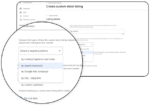The titans of our industry are perpetually in court, whether defending themselves or attacking their competitors. But it’s rare that these lawyerly jabs actually make it out of the courtroom and into developers’ lives.
But that’s exactly what happened on May 4, as the long-running lawsuit and countersuit between Google and Oracle resulted in a ruling that, in no uncertain terms, could break much of the software in use today.
On that date, a U.S. Circuit Court of Appeals ruled that Google had not only copied code, but by recreating the functionality of Oracle’s APIs, it was also infringing on Oracle’s copyrights. The decision insinuates that a developer who implements a standard or specification can now be open to lawsuit by the specification’s creator.
If it sounds like this type of ruling would break the entire foundation of software development, that’s because it does. Sam Ramji, vice president of strategy at Apigee, said, “These [APIs] are all building blocks upon which we must stack all the things we have, from devices to applications to cloud. When you start to play games and say you’re not going to be allowed to use our Lego bricks, then you end up with insanity.”
Corynne McSherry, intellectual property director at the Electronic Frontier Foundation, said that this ruling is so dangerous that she’s relatively certain the U.S. Supreme Court will take up the appeal. “The ramifications could be really profound for any number of industries,” she said.
“What we argued [in an amicus brief] is that much of the software industry was built on the idea you don’t need to get permission to use an API. That’s how it’s supposed to work. We filed a brief where we talked to very early software developers where they said, if they had to go and get permission to use an API, it would have hampered their work.”
Pattern of patent rulings
Way back in 2012, under the watchful eye of Judge William Alsup of the U.S. District Court for the Northern District of California, Google and Oracle essentially agreed that the case was a draw. While Google had been found to have copied, verbatim, a handful of lines of Oracle’s code, the end result of this trial was both sides agreeing to give the other side nothing. But why did the circuit court rule as it did? McSherry said it, recently, has been overruled in numerous cases.
“The Supreme Court has been overturning the federal circuit right and left in the patent space,” she said. “The federal circuit is supposed to focus mainly on patent cases. There are many people who have expressed concerns over time over the federal circuit in particular. There seems to be a bit of a pattern with the federal circuit not respecting what the Supreme Court says, which is important. The federal circuit does not seem to feel beholden in that way. A number of people are concerned. We created this federal circuit for patents, but maybe this wasn’t such a good idea after all.”
McSherry spoke to us in late May, but a week later, the Supreme Court overturned another circuit court decision on June 2; this was one about an intellectual property feud between Akamai and Limelight Networks.
“The sense has to be that if you’re involved in patent litigation, you’d better be ready to bet the farm all the way up to the Supreme Court to protect your patents, or to innovate,” she said.
Ramji said the circuit court’s ruling makes more sense if you see intellectual property as chattel, the legal terminology for property. Prior to the U.S. Civil War, chattel rules were used to return runaway slaves in the North to their owners in the South.
“If you first take the blue pill and you see APIs as chattel, you can see why API access was first prohibited,” said Ramji. “There was a case of complaints by eBay against a few companies that were scraping the listings around 1999, and the point of law they were found on was trespass of chattel, meaning these companies scraping eBay’s site had trespassed eBay’s chattel and couldn’t take the data. eBay, in 2002, opened the first APIs formally. They said ‘Here’s the data.’ If you then come at it from that point of view, patents should be in place to enforce the recovery of the company that did the investment.”
There’s just one major flaw with this logic, said Ramji: “Most of us would say the ROI is that you got to sell the software in the first place. We look at Microsoft’s behavior on patents: You sold US$70 billion of software. That’s your ROI. You don’t get to play this other card.”
The real tragedy here, said McSherry, is that Alsup’s original opinion was so well thought-out and considered. Yet, despite this, the circuit court essentially threw out his entire ruling.
“[Alsup] took the time to understand the technology. He came out with this reasoned and thoughtful opinion. The circuit threw that in the air and threw a wrench into the situation,” she said.
The federal circuit court did leave room for fair use to be found in Google’s replication of the Java APIs. This fair use will be decided by Alsup, but may not matter in the end if the Supreme Court gets involved.
What’s really going on here, said McSherry, is that the federal circuit court is applying copyright law where it does not belong. “It’s not that software isn’t copyrightable. We can handle that. That makes sense; there’s creativity involved,” she said.
“But there are places that are excluded from copyright, and reasonably so. Copyright is about innovation policy, and this is about the court losing sight of this. This may be one of those ‘careful what you wish for’ situations for Oracle.”





